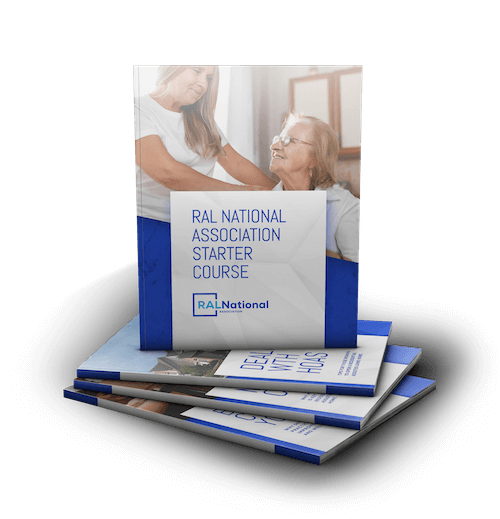[vc_row css_animation=”” row_type=”row” use_row_as_full_screen_section=”no” type=”full_width” angled_section=”no” text_align=”left” background_image_as_pattern=”without_pattern”][vc_column][vc_empty_space][vc_column_text]
Do You Have a Resident With Limited Mobility?
[/vc_column_text][vc_empty_space height=”16px”][vc_column_text]Seniors can still enjoy life with limited mobility. However, having a mobility issue can affect nearly every area of a senior’s life. Immobility affects individuals who suffer from the loss of the ability to perform routine daily tasks.[/vc_column_text][vc_empty_space height=”16px”][vc_column_text]As a result, these seniors are unable to complete self-care without assistance. Unfortunately, residents who are confined to bed for long periods of time can often experience severe mood swings. Immobility can be discouraging. In addition, these residents often become bored with life and miss social interaction with others. Some residents are unable to move from their beds unless staff places them in a chair.[/vc_column_text][vc_empty_space height=”16px”][vc_column_text]For these seniors, the most important thing for them is undivided attention. Residents need to feel valued and loved, especially to avoid the negative effect that the lack of mobility can have on mental health. It’s not uncommon for these residents to suffer from depression and anxiety. On the other hand, being immobile doesn’t have to barricade seniors from living a full and happy life.[/vc_column_text][vc_empty_space height=”16px”][vc_column_text]There are adaptive aids that can make it easier. These aids enable seniors with limited mobility to perform common tasks and continue to enjoy their favorite past-times. Adaptive aids allow residents to take the necessary steps to maintain some independence. Physical limitations do not have to be insurmountable obstacles. Adaptive aids also allow residents to develop new skills, learn new languages, or take up a new hobby.[/vc_column_text][vc_empty_space height=”16px”][vc_column_text]There are some strategies that can make it easier for seniors to cope with limited mobility. Caregivers must be willing to help residents learn how to participate in hobbies and activities.[/vc_column_text][vc_empty_space height=”16px”][vc_column_text]
THREE MAJOR ADAPTIVE AIDS FOR LIMITED MOBILITY
[/vc_column_text][vc_empty_space height=”16px”][vc_column_text]
- Mobility Scooters
Mobility scooters can vastly improve the quality of life for some residents. They allow seniors to regain some independence and freedom, enabling them to move about for fresh air and sunshine. It also makes it easier to travel to unfamiliar locations, allowing the resident to feel more comfortable.[/vc_column_text][vc_empty_space height=”16px”][vc_column_text]
- Hand Tools for Senior Mobility
These special hand tools make it easier for a resident to get dressed without assistance. The tools help the resident to be able to retrieve items that would normally be out of reach and require assistance.[/vc_column_text][vc_empty_space height=”16px”][vc_column_text]
- Voice Applications
Programming applications can be controlled by voice or gesture. These applications make it easier for a resident to regain ownership performing certain tasks. Voice applications allow residents to send messages, order food, or program an alarm clock.[/vc_column_text][vc_empty_space height=”16px”][vc_column_text]
SEVEN ACTIVITIES SUGGESTED FOR RESIDENTS WITH LIMITED MOBILITY
[/vc_column_text][vc_empty_space height=”16px”][vc_column_text]Residents often suffer from a lack of mobility due to chronic conditions such as stroke, arthritis, or fall injuries. Normal activities and hobbies they previously enjoyed might seem too difficult. Loss of mobility doesn’t mean the end to a quality of life.[/vc_column_text][vc_empty_space height=”16px”][vc_column_text]Here are some activities your resident may enjoy with limited mobility:[/vc_column_text][vc_empty_space height=”16px”][vc_column_text]1. Physical Exercise: Residents who have limited mobility may still be able to do certain exercises to get their bodies active. The body’s joints, tendons and muscles work better when they are used regularly, even if that use is limited. Simple chair exercises and chair yoga routines can offer residents health benefits and a mood boost. Additional exercises can be done using a walker to help reduce swelling in ankles and feet.[/vc_column_text][vc_empty_space height=”16px”][vc_column_text]2. Reading Books: Residents reading…an excellent past time for elderly adults. Reading can be an enjoyable activity to keep the brain active. Reading can also improve memory, reduce stress, improve sleep, and delay cognitive decline.[/vc_column_text][vc_empty_space height=”16px”][vc_column_text]3. Volunteering For Local Charities: Residents who aren’t very mobile or considered homebound can still give back to their community. Simply watching TV all day, every day isn’t a healthy activity. Perhaps contact your local charity, hospital, or religious organization to find out if there are any projects available where seniors can assist. Residents could work on projects that allow them to contribute. This is a wonderful way for senior living residents to stay engaged and feel a sense of purpose and accomplishment.[/vc_column_text][vc_empty_space height=”16px”][vc_column_text]4. Nature And Outdoors: Allowing your residents to get outside to spend a little time in nature is relaxing and a great mood booster. Seniors who are limited in their mobility can still be assisted to get to the porch or sit near a big window. It is great to allow your residents to get some fresh air or view some nice scenery.[/vc_column_text][vc_empty_space height=”16px”][vc_column_text]5. Arts And Crafts: Encouraging seniors to get in touch with their creative side is an exciting way to get them engaged. Residents who are offered the option to draw, color, paint, and sculpture are happy and feel fulfilled. Other creative projects for residents could include scrapbooks, organize photo albums, or even a recipe book. As a plus, being creative also comes with health benefits. It has been found that creative projects and activities help reduce negative emotions, stress, and improve medical outcomes.[/vc_column_text][vc_empty_space height=”16px”][vc_column_text]6. Participating In Hobbies: Residents who spend time with their hobbies helps with limited mobility in older adults. Residents can enjoy activities that don’t require a lot of moving around such as: baking, knitting, light gardening, playing a musical instrument, or learning a new language. Exploring new things is a great way to keep the mind active and negative thoughts and behaviors.[/vc_column_text][vc_empty_space height=”16px”][vc_column_text]7. Classic Games: Board games and puzzles are a fantastic source for seniors in residential assisted living homes. There are so many games for your resident to choose and most can be played in groups with visitors. Other games offer opportunities for one-on-one quality time with relatives, and even solo games like solitaire.[/vc_column_text][vc_empty_space height=”16px”][vc_column_text]
MOBILIZING QUALITY SENIOR CARE THROUGH RALNA
[/vc_column_text][vc_empty_space height=”16px”][vc_column_text]The Residential Assisted Living National Association is the nation’s only RAL industry association providing resources and support to RAL home owners and operators. RALNA provides hot topics ranging from legislation, discounted products, unique services, marketing resources, employee retention tips and so much more. Contact at www.RALNA.org for additional information on providing quality care for seniors across the country.[/vc_column_text][vc_empty_space][vc_separator css_animation=”fadeIn” type=”normal” color=”#eaeaea”][vc_empty_space][vc_row_inner row_type=”row” type=”full_width” text_align=”left” css_animation=””][vc_column_inner width=”1/6″][/vc_column_inner][vc_column_inner width=”2/3″][vc_single_image image=”99″ img_size=”medium” alignment=”center” qode_css_animation=””][vc_empty_space height=”10px”][vc_column_text]
If you found the information on this article valuable, you’ll find enormous benefits by becoming a member of our community. Visit this page to become a RALNA Member.
[/vc_column_text][/vc_column_inner][vc_column_inner width=”1/6″][/vc_column_inner][/vc_row_inner][vc_empty_space][/vc_column][/vc_row]











